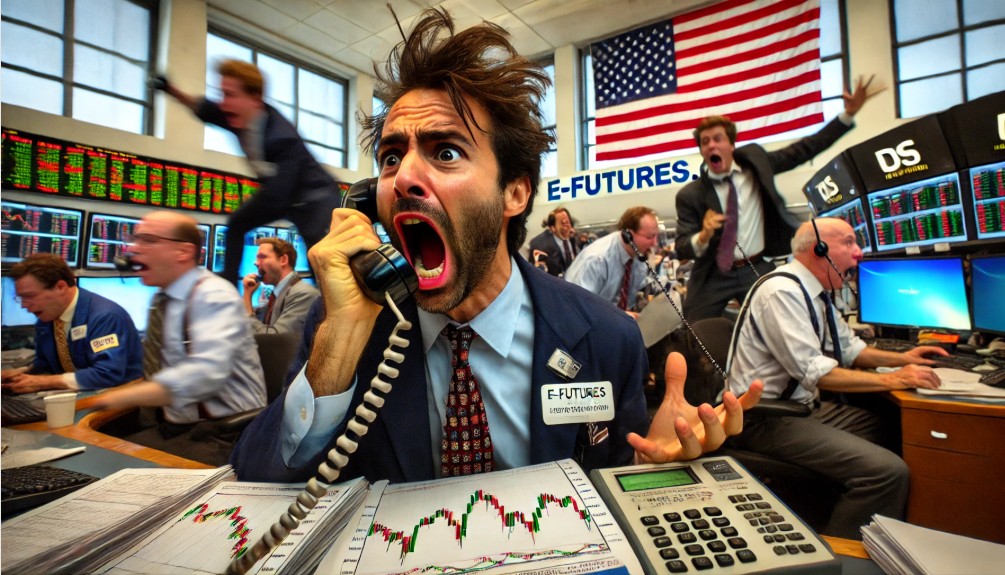Silver futures and gold futures are crucial components of the global financial market, providing investors, institutions, and speculators an opportunity to hedge risk, diversify portfolios, and engage in speculative trading. A gold futures contract or a silver futures contract represents an agreement to buy or sell a specific amount of the metal at a predetermined price at a future date. These contracts are traded on commodity exchanges such as the COMEX division of the New York Mercantile Exchange (NYMEX) and play a pivotal role in price discovery and liquidity.
President Trump’s Tariffs and Their Effects on Silver and Gold Futures
The implementation of tariffs during President Donald Trump’s administration had significant repercussions across multiple sectors, including the global silver futures and gold futures markets. The tariffs, particularly those imposed on China and European nations, created economic uncertainty, leading investors to seek safe-haven assets such as gold and silver.
Direct Impact on Silver Futures Price and Gold Futures Price
- Trade War Tensions and Safe-Haven Demand: The trade disputes between the U.S. and China, exacerbated by retaliatory tariffs, led to increased demand for safe-haven assets. The gold futures price and silver futures price often surge during periods of geopolitical instability.
- Inflationary Pressures: Tariffs generally lead to increased production costs, contributing to inflationary pressures. Since gold and silver are historically viewed as hedges against inflation, their futures contracts saw heightened trading activity.
- Industrial Demand for Silver: Unlike gold, silver has significant industrial applications. Higher tariffs on raw materials and industrial components affected silver’s demand from manufacturers, introducing additional volatility in silver futures trading.
Risk Assessment: Tariffs and Market Reactions
When evaluating the impact of tariffs on trading futures, it is critical to assess the risks in various scenarios:
Rising Tariffs Lead to Increased Safe-Haven Buying
- Potential Outcome: Higher tariffs create market instability, leading to an increase in gold futures price and silver futures price due to investor flight to safety.
- Risk Factors: Market manipulation and speculative bubbles may lead to exaggerated price movements, resulting in potential overvaluation and subsequent sharp corrections.
Reduced Industrial Demand for Silver
- Potential Outcome: Increased tariffs on industrial materials lead to lower manufacturing activity, reducing silver demand and causing a decline in silver futures price.
- Risk Factors: A prolonged industrial slowdown could diminish silver’s demand, counterbalancing its safe-haven appeal.
Tariff Removal and Economic Stability
- Potential Outcome: A resolution to tariff disputes stabilizes markets, leading to potential declines in gold and silver futures as investors pivot back to riskier assets.
- Risk Factors: A sudden exit from safe-haven assets may trigger volatile sell-offs, creating liquidity risks in futures trading.
Historical Context: Real-Life Trades and Major Market Movements
The 2008 Financial Crisis and the Silver & Gold Boom
During the 2008 global financial crisis, gold futures price skyrocketed as investors sought a hedge against economic collapse. The price of gold surged from around $700 per ounce in 2008 to over $1,900 per ounce by 2011. Silver futures trading saw a similar spike, rising from approximately $9 per ounce in 2008 to nearly $50 per ounce in 2011. This demonstrates how economic uncertainty can lead to record-breaking gains in trading.
The 2020 COVID-19 Market Shock
Another historical moment in future trading occurred during the COVID-19 pandemic. As global markets collapsed in early 2020, gold futures price surged to an all-time high of over $2,000 per ounce. The silver futures price, which had been hovering around $17 per ounce pre-pandemic, surged past $28 per ounce as investors and hedge funds flocked to commodities.
Hypothetical Case Studies in Silver and Gold Futures Trading
Case Study 1: A Futures Trader Hedges Against Inflation
A hedge fund manager, anticipating inflation due to expansionary monetary policies and tariffs increasing costs, takes a long position in gold futures. As inflation data confirms rising prices, the gold futures price climbs, allowing the trader to profit.
Case Study 2: A Manufacturer’s Risk Management Using Silver Futures
An electronics manufacturer, dependent on silver for production, buys silver futures contracts to lock in current prices. As tariffs drive silver costs higher, the company benefits by having secured a lower purchase price, thus mitigating financial risk.
Why Silver and Gold Futures Trading Have Persisted for Centuries
Liquidity and Accessibility
Gold and silver have been traded for centuries due to their intrinsic value, global demand, and historical role as monetary assets. Futures trading brokers provide traders with access to these markets, ensuring liquidity and competitive pricing.
Inflation and Economic Uncertainty
Silver and gold act as inflation hedges, maintaining their relevance in global finance. This is why institutions and investors consistently participate in futures trading.
Role in Portfolio Diversification
Trading futures in precious metals provides investors with diversification opportunities, reducing overall portfolio risk.
Why Trade Futures with E-Futures.com?
For traders looking to engage in commodity brokerage, selecting the right futures broker is crucial. E-Futures.com, with their state-of-the-art CannonX trading platform, offers:
- Regulatory Compliance & Security: Fully compliant with NFA and CFTC regulations.
- Expert Onsite Brokers: Decades of experience in trading futures and risk management.
- Top-Rated Trading Platforms: Numerous 5-star reviews on TrustPilot for reliability and execution speed.
- Comprehensive Market Access: From e mini futures to metals and agricultural commodities.
The interplay between global trade policies, economic uncertainty, and monetary policies continuously shapes silver futures and gold futures markets. As historical and hypothetical case studies show, trading futures in gold and silver remains a critical strategy for hedging risk, diversifying investments, and capitalizing on economic trends.
With a strong regulatory record, powerful trading platforms, and expert futures trading brokers, E-Futures.com remains one of the best choices for both novice and seasoned futures traders looking to navigate the complexities of future trading.
To open an account with E-Futures.com, please click here.
Ready to start trading futures? Call US 1(800)454-9572 – Int’l (310)859-9572 email info@cannontrading.com and speak to one of our experienced, Series-3 licensed futures brokers and start your futures trading journey with E-Futures.com today.
Disclaimer – Trading Futures, Options on Futures, and retail off-exchange foreign currency transactions involves substantial risk of loss and is not suitable for all investors. Past performance is not indicative of future results. You should carefully consider whether trading is suitable for you in light of your circumstances, knowledge, and financial resources. You may lose all or more of your initial investment. Opinions, market data, and recommendations are subject to change at any time.
Important: Trading commodity futures and options involves a substantial risk of loss. The recommendations contained in this writing are of opinion only and do not guarantee any profits. This writing is for educational purposes. Past performances are not necessarily indicative of future results.
**This article has been generated with the help of AI Technology. It has been modified from the original draft for accuracy and compliance.
***@cannontrading on all socials








